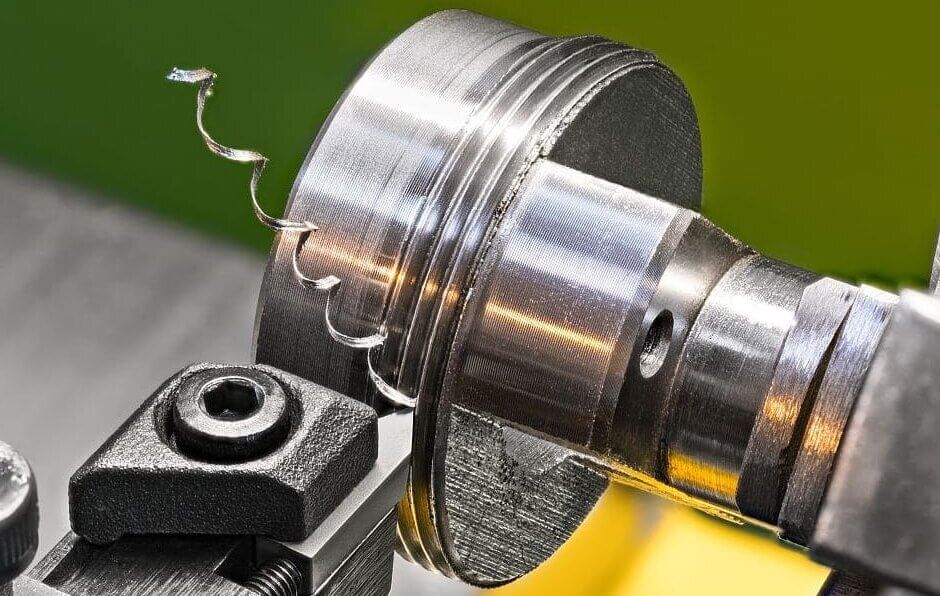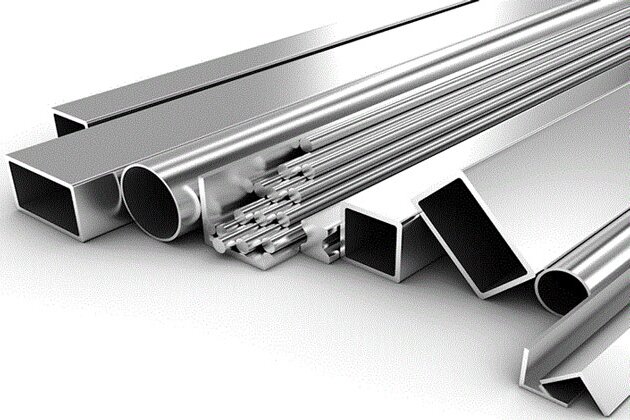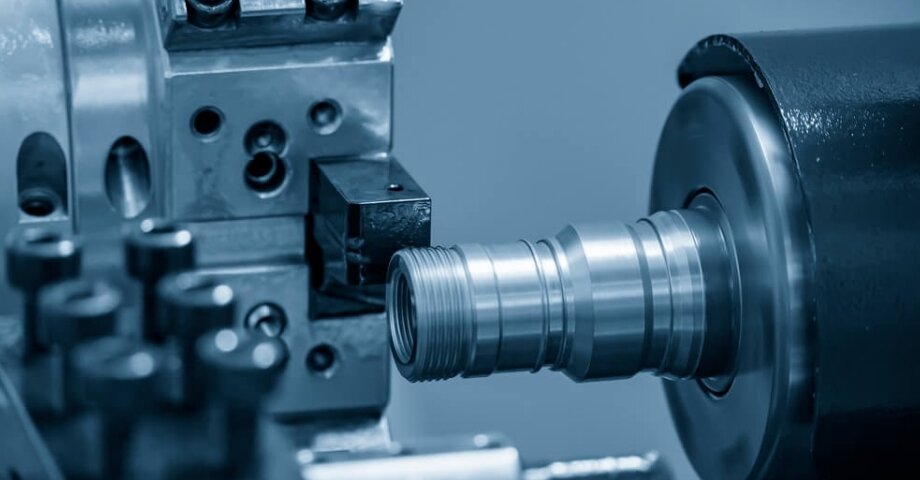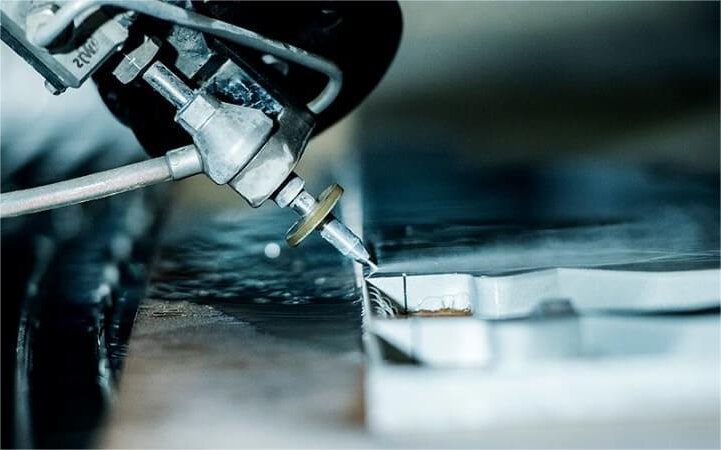하드코트 아노다이징은 특히 까다로운 환경에서 금속 표면의 내구성과 성능을 개선하기 위해 자주 사용됩니다. 부품의 수명이 길어야 하거나, 부식에 강해야 하거나, 표면이 단단해야 하나요? 하드코트 아노다이징은 알루미늄 부품을 더 까다롭고 내마모성이 뛰어나며 부식으로부터 더 잘 보호하는 입증된 솔루션을 제공합니다.
하드코트 아노다이징의 장점은 필수적인 표면 보호 그 이상입니다. 하드코트 아노다이징의 작동 방식과 이점, 사용처에 대해 알아보세요.
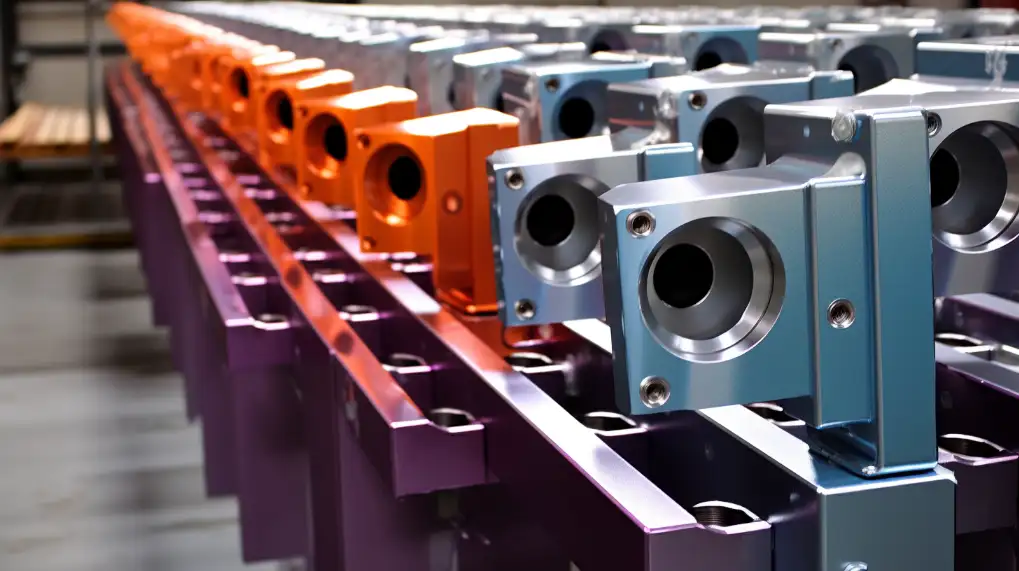
하드 코팅 아노다이징이란 무엇입니까?
하드코트 아노다이징 또는 유형 III 아노다이징은 금속 부품 표면에 두꺼운 산화층을 생성합니다. 이 공정에서는 전해액(일반적으로 황산)을 사용하여 산화층을 생성합니다. 하드코트 아노다이징 과정에서 생성되는 산화물 층의 두께는 특정 요구 사항에 따라 다르지만 일반적으로 25~250마이크론입니다.
산화물 층은 단순한 코팅이 아니라 금속 자체의 일부분으로 부식과 긁힘에 강하고 내구성이 뛰어납니다. 이 공정은 주로 알루미늄 합금에 적용되지만 다른 금속에도 적용할 수 있습니다.
단계별 하드 코트 아노다이징 공정
하드코트 아노다이징에는 몇 가지 필수 단계가 포함됩니다. 각 단계는 금속 표면을 더 강하고 내구성이 뛰어나며 마모에 강하도록 만드는 데 중요한 역할을 합니다. 프로세스를 단계별로 살펴보겠습니다.
1단계: 표면 준비
아노다이징 전에 알루미늄 부품을 철저히 세척해야 합니다. 일반적으로 알칼리성 또는 산성 용액으로 세척하여 오염 물질을 제거합니다. 세척 후에는 잔여물이 남지 않도록 물로 헹굽니다.
2단계: 전해질 용액 및 전압 설정
세척한 부품을 전해질 용액(보통 황산)에 담급니다. 그런 다음 용액에 부품을 양극(양극) 및 음극(음극) 역할을 하는 전류가 가해집니다.
전압과 전류 밀도는 신중하게 제어됩니다. 전압이 높을수록 더 두꺼운 산화물 층이 생성되지만 너무 높으면 타거나 코팅이 고르지 않을 수 있습니다. 일반적인 설정 범위는 원하는 두께와 부품 크기에 따라 12~24볼트입니다.
3단계: 시간 및 온도 제어
부품은 일반적으로 30분에서 몇 시간 동안 전해질 용액에 일정 시간 동안 머물러 있습니다. 이 시간이 길어질수록 산화물 층이 두꺼워집니다.
온도 또한 중요한 역할을 합니다. 부품이 과열되는 것을 방지하고 균일한 코팅을 보장하기 위해 용액을 32°F~50°F(0°C~10°C) 사이의 저온으로 유지합니다.
4단계: 아노다이징 후 처리
아노다이징이 완료되면 부품을 헹구어 남아 있는 전해질을 제거합니다. 이 단계에서 산화물 층은 다공성이므로 컬러 마감을 원하는 경우 선택적으로 염색할 수 있습니다.
마지막으로 부품을 밀봉하여 기공을 닫고 염료(사용 시)를 고정합니다. 이 작업은 종종 부품을 뜨거운 물이나 밀봉 용액에 담가서 수행합니다.
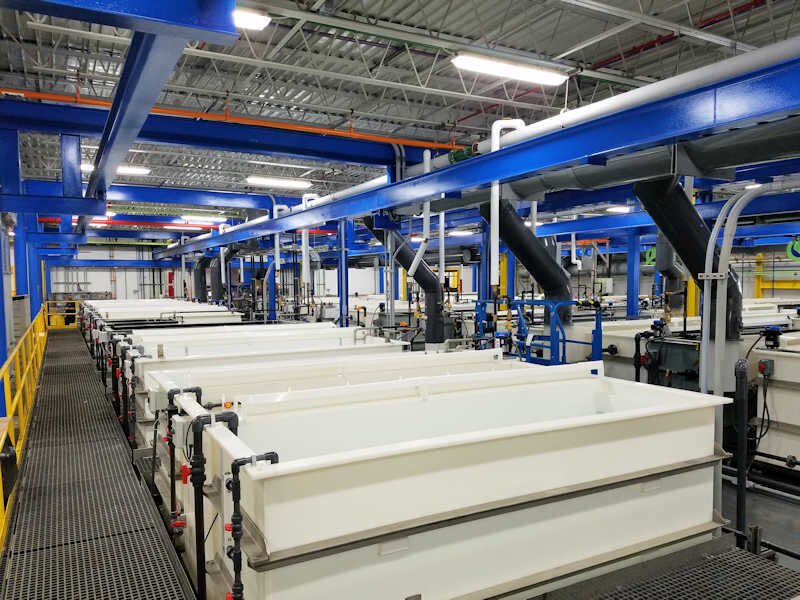
하드 코트 아노다이징의 이점
하드코트 아노다이징은 금속 부품의 성능을 향상시키는 데 이상적인 선택이 될 수 있는 많은 장점을 제공합니다. 이 공정의 주요 이점을 살펴보겠습니다.
내마모성 및 내마모성 향상
양극산화 처리된 층은 원시 알루미늄보다 훨씬 더 복잡하여 사파이어와 비슷한 수준에 도달하는 경우가 많습니다. 따라서 표면이 긁힘, 찌그러짐 및 마찰로 인한 기타 손상을 덜 입게 됩니다.
향상된 부식 방지
알루미늄은 자연적으로 얇은 산화막을 형성하지만 열악한 환경으로부터 보호하기에 충분하지 않습니다. 하드 코팅 아노다이징은 습기, 화학 물질, 염분 부식에 견딜 수 있는 더 두껍고 견고한 보호막을 형성합니다.
향상된 전기 절연성
아노다이징 과정에서 형성된 산화물 층은 비전도성입니다. 따라서 하드코팅 양극산화 부품은 절연이 필요한 전기 애플리케이션에 유용합니다.
고온 저항 및 내구성
하드코트 아노다이징은 처리되지 않은 알루미늄보다 더 높은 온도를 견딜 수 있습니다. 산화물 층은 열 장벽 역할을 하여 기본 금속을 열 손상으로부터 보호합니다.
하드 코트 아노다이징과 일반 아노다이징 비교
하드코트 아노다이징과 일반 아노다이징 는 금속 표면을 향상시키는 데 사용되는 방법이지만 주요 차이점이 있습니다. 이를 비교하여 어떤 것이 가장 적합한지 결정할 수 있도록 도와드리겠습니다.
코팅 두께
하드코트 아노다이징은 일반 아노다이징보다 훨씬 두꺼운 산화막을 생성합니다. 일반 아노다이징은 일반적으로 5~25미크론의 코팅을 생성하지만 하드코트 아노다이징은 50~100미크론 이상에 달할 수 있습니다.
경도 및 내충격성
하드코트 아노다이징은 알루미늄 표면의 경도를 크게 높여 로크웰 C 척도에서 60~70에 이르는 경우가 많습니다. 반면 일반 아노다이징은 기능보다는 장식용으로 더 부드러운 코팅을 제공합니다.
시각적 외관 및 미적 품질
일반 아노다이징은 미적 매력 때문에 종종 선택됩니다. 다양한 색상으로 염색할 수 있는 매끄럽고 균일한 표면을 만듭니다. 마감은 매끄럽고 매력적이어서 가전제품이나 가구에 많이 사용됩니다.
하드코트 아노다이징은 내구성은 뛰어나지만 무광택의 회색빛 마감 처리가 되는 경향이 있습니다. 이는 외관보다는 성능에 더 중점을 둡니다. 하지만 일반 아노다이징보다 옵션이 제한적이지만 색상을 지정할 수 있습니다.
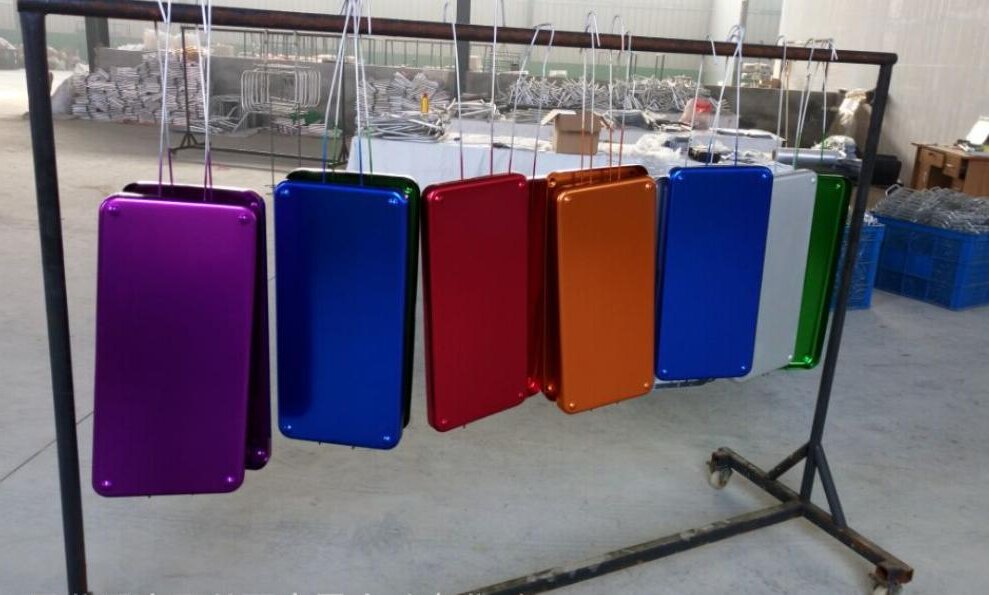
하드 코트 아노다이징의 일반적인 응용 분야
하드코트 아노다이징은 다양한 산업 분야에서 사용되는 다목적 공정입니다. 일반적으로 어디에 사용되는지 살펴보겠습니다.
항공우주산업
항공우주 분야에서는 모든 부품이 극한의 조건을 견뎌내야 합니다. 하드코트 아노다이징은 랜딩 기어, 엔진 부품 및 구조 요소에 사용됩니다. 이 공정을 통해 이러한 부품은 높은 스트레스, 온도 변동, 열악한 환경 노출을 견딜 수 있습니다.
자동차 및 군사용
자동차 및 군사용 애플리케이션에는 견고하고 신뢰할 수 있는 소재가 필요합니다. 하드코트 아노다이징은 피스톤, 서스펜션 부품 및 무기 시스템과 같이 지속적인 마모와 충격, 외부 환경에 노출되는 부품에 사용됩니다.
전자 및 전기 부품
하드코트 아노다이징은 전기 절연을 제공하여 전자제품에 유용합니다. 단락을 방지하고 열 관리를 개선하기 위해 하우징, 방열판, 커넥터에 적용하는 경우가 많습니다.
의료 기기 및 장비
의료 분야에서 장비는 내구성이 뛰어나고 부식에 강하며 세척이 쉬워야 합니다. 하드코트 아노다이징은 수술 도구, 영상 장치 및 진단 장비에 사용됩니다.
하드코트 아노다이징에 적합한 재료 선택하기
하드코트 아노다이징에 있어 모든 금속이 똑같이 만들어지는 것은 아닙니다. 어떤 재료는 다른 재료보다 더 잘 작동하며 올바른 재료를 선택하면 최종 결과물에 큰 차이를 만들 수 있습니다. 어떤 금속이 가장 유리하고 어떤 요소를 고려해야 하는지 알아보겠습니다.
하드코트 아노다이징의 이점을 가장 많이 누릴 수 있는 금속
하드코트 아노다이징은 알루미늄과 그 합금에 가장 적합합니다. 이러한 소재는 자연적으로 강력한 산화층을 형성하므로 이 공정에 이상적입니다. 일반적인 선택은 다음과 같습니다:
- 6061 알루미늄: 강도와 다용도로 잘 알려진 이 소재는 항공우주 및 자동차 분야에서 널리 사용되고 있습니다.
- 7075 알루미늄: 높은 강도를 제공하며 군용 및 구조용 부품에 자주 사용됩니다.
- 2024 알루미늄: 견고하기로 유명한 이 소재는 항공기 및 중장비에 주로 사용됩니다.
티타늄 및 마그네슘과 같은 다른 금속도 아노다이징할 수 있지만 공정과 결과가 다릅니다. 하드코트 아노다이징의 경우 알루미늄이 여전히 최고의 선택입니다.
자료 선택 시 고려해야 할 요소
- 합금 구성: 알루미늄 합금마다 실리콘, 구리 및 기타 원소의 함량이 다릅니다. 이는 소재의 양극산화 정도와 코팅의 최종 특성에 영향을 미칩니다.
- 부품 지오메트리: 복잡한 모양이나 얇은 부분은 균일한 코팅을 위해 아노다이징 시 특별한 주의가 필요할 수 있습니다.
- 사용 목적: 부품이 직면하게 될 환경과 응력을 고려하세요. 예를 들어 7075와 같은 고강도 합금은 고강도 애플리케이션에 더 적합합니다.
- 비용: 일부 합금은 다른 합금보다 더 비쌉니다. 성능 요구 사항과 예산 제약의 균형을 맞춰야 합니다.
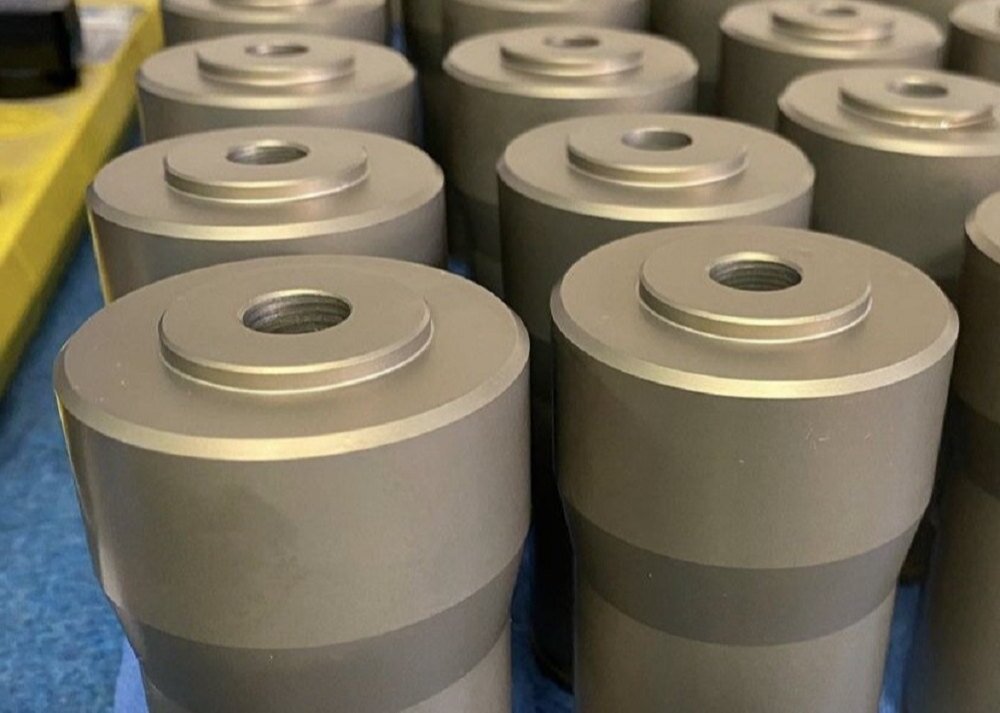
하드코트 아노다이징의 품질에 영향을 미치는 요인
공정 전반에 걸쳐 여러 가지 요소가 하드코트 아노다이징의 품질에 영향을 미칠 수 있습니다. 최종 결과에 영향을 미칠 수 있는 주요 요소를 살펴보겠습니다.
아노다이징 공정에 대한 온도의 영향
온도는 하드코트 아노다이징의 핵심 요소입니다. 온도는 금속에 산화물 층이 형성되는 방식에 영향을 미칩니다. 온도가 너무 높으면 층이 고르지 않고 얇아질 수 있습니다. 온도가 너무 낮으면 공정이 느려지고 산화층이 제대로 형성되지 않을 수 있습니다.
최상의 결과를 얻으려면 온도를 제어해야 합니다. 하드 코트 아노다이징의 경우 용액 온도는 일반적으로 0°C에서 5°C 사이로 유지됩니다.
산 농도 및 첨가제의 역할
황산의 농도와 전해질 용액의 첨가물도 공정에 영향을 미칩니다. 산 농도는 산화물 층이 얼마나 빨리 형성되는지에 영향을 미칩니다. 산 농도가 높을수록 일반적으로 더 두꺼운 층이 형성됩니다.
첨가제는 아노다이징 공정을 개선할 수도 있습니다. 산 농도와 첨가제를 조정하면 산화물 층의 두께와 품질을 제어할 수 있습니다.
아노다이징 전 표면 마감의 효과
아노다이징 전에 금속의 표면 마감이 매우 중요합니다. 표면이 매끄러우면 산화물 층이 더 균일해집니다. 표면이 거칠거나 고르지 않으면 코팅이 일관되지 않을 수 있습니다.
다음과 같은 금속 우아한, 샌드 블라스트를 사용하거나 아노다이징 전에 가볍게 에칭하면 일반적으로 처리되지 않거나 손상된 표면보다 더 나은 결과를 얻을 수 있습니다.
결론
하드코트 아노다이징은 금속 부품의 내구성, 내마모성, 부식 방지 기능을 강화하는 견고한 공정입니다. 두껍고 단단한 산화물 층을 생성하면 금속이 긁힘, 부식, 고온에 대한 내성이 강화됩니다.
하드코트 아노다이징은 열악한 환경에서도 견딜 수 있는 부품이 필요한 경우 탁월한 솔루션입니다. 문의하기 지금 바로 이 프로세스가 제품에 어떤 이점을 제공하고 성능을 향상시킬 수 있는지 알아보세요!
안녕하세요, 저는 케빈 리입니다

지난 10년 동안 저는 다양한 형태의 판금 제작에 몰두해 왔으며 다양한 워크숍에서 얻은 경험에서 얻은 멋진 통찰력을 이곳에서 공유했습니다.
연락하세요

케빈 리
저는 레이저 절단, 굽힘, 용접 및 표면 처리 기술을 전문으로 하는 판금 제조 분야에서 10년 이상의 전문 경험을 갖고 있습니다. Shengen의 기술 이사로서 저는 복잡한 제조 문제를 해결하고 각 프로젝트에서 혁신과 품질을 주도하는 데 최선을 다하고 있습니다.

